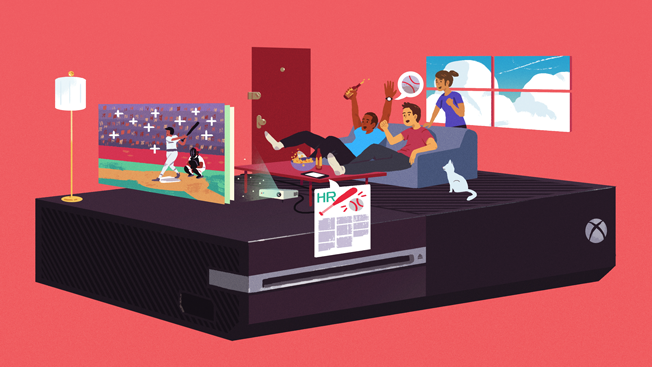Cable TV providers probably wish they could respawn and start over right about now. Pay TV, once the biggest arena for media buys, is fading faster than you can say, “30-second spot.” But as we all know, people are still watching, playing and consuming plenty of content—only in new and different places than before.
Gaming consoles like Sony’s Playstation 4 and Microsoft’s Xbox One, with their on-demand video, streaming integration and even live TV capabilities, have become high-quality alternatives to those turned off by high cable fees and nonstop commercials. For marketers, that means there’s an opportunity to take advantage of a rapidly emerging advertising arena.
According to Nielsen, cable network ratings dropped 9 percent in 2014. It’s no coincidence that at the same time, console purchases have been soaring. For example, 25 million PS4 consoles have been sold in less than two years, and Sony estimates that number will reach approximately 40 million in 2016.
With the effectiveness of traditional media coming into question, marketers have been steadily shifting their focus to cross-channel campaigns on gaming platforms. Take auto brand Mazda, for instance, which teamed up with Microsoft for an interactive campaign in the racing game “Forza Horizon 2.” The campaign incorporated videos, contests and real-time downloadable content that let gamers unlock new cars. The result was 136 million impressions and over 180,000 in-game downloads. There was even an in-person event where 16,000 Xbox players competed at “Forza Horizon 2” for a chance to win a 2016 Mazda MX-5 Miata.
With an emphasis on real-time value for gamers who were in the middle of racing, Mazda made an immediate connection with the consumer without being overly promotional. According to Adobe Campaign, 77 percent of marketers think real-time marketing is important, and since gaming consoles are still a relatively new opportunity for marketers, their impact on brands is only going to grow.
Just as cell phones evolved into smart mobile devices capable of replacing laptops and desktop computers, gaming consoles have a chance to make cable boxes obsolete. In-console consumption habits have jumped in recent years, per Nielsen. On Xbox One, 51 percent of users watched video on-demand in 2014, up from only 26 percent of Xbox 360 users back in 2010. Likewise, 42 percent of PS4 gamers used streaming subscription services like Netflix and Hulu compared to just 23 percent of Playstation 3 users back in 2010.
Gaming consoles also have a crucial advantage over other devices—they can truly become the hub of in-home entertainment for millennials who grew up as gaming culture was taking off. Companies have the potential to not only advertise on gaming platforms, but also invest in directly programming for the purposes of live streaming and interactive branding. Last summer, Amazon spent approximately $1 billion to acquire Twitch, a video game streaming platform which had become one of the most popular sites on the Internet, and as a result, a goldmine for marketing to millennials. Why? Because of the ability to leverage real-time advertising. Before HBO premiered the second season of Silicon Valley, the network released the first episode early on Twitch as the show’s stars were live streamed playing video games and answering questions from viewers on the platform.
All of this content is quickly shaping a new landscape where consumers access different apps and services all on one video game console. Soon, it might be the only game in town.









